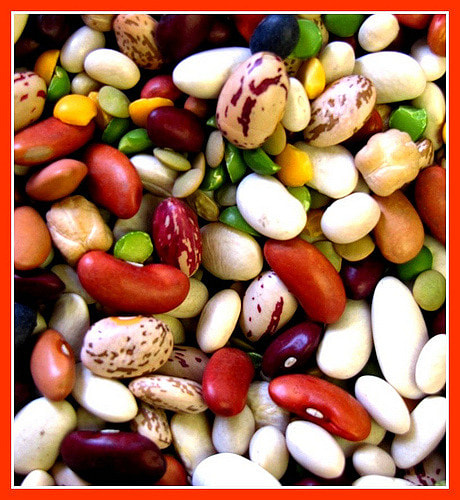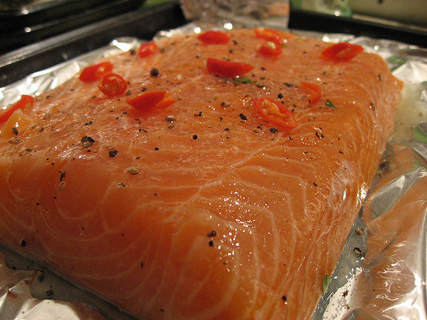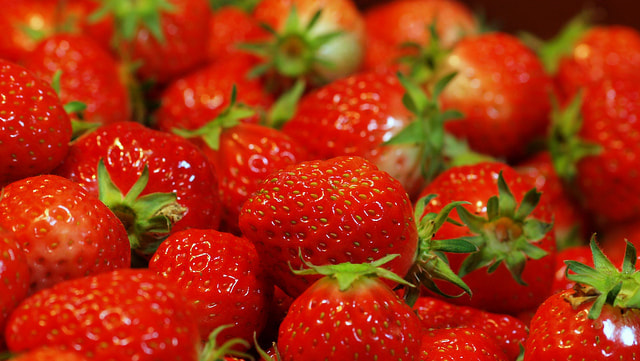If you gave yourself the message that you wanted to hear from others, what would that message be?Inner approval, as opposed to getting external approval or permission from others, can be one of the most radically empowering strategies one can make. Instead of wishing for them to understand you, love you, appreciate you, see how good you are, or see your value, why not do this for yourself? This, in a way, is the world of affirmations and positive thinking. What is the message that you long to hear from another? Is there someone in your life, or was there someone in your life, that you wished had said, “I love you,” or “I’m so proud of you,” or “You can be whatever you want to be. I believe in you” ? What if you started saying this to yourself? On a daily basis. Whenever you felt you needed to hear it. As often as you like. Being willing to do this requires that we let go of controlling another person and needing somebody else to show up a certain way in order for us to be okay. We take back our power this way. And the good news is that we can realize, through doing this simple activity, that we really are in charge of how we feel. One of the biggest obstacles that people face when they make changes in their lives is the worry about what others might think or that they might be judged or rejected in some way. And this does and can happen. But if we are no longer tied to another’s approval, because we are consistently giving that to ourselves, then we are more free to move towards our own dreams regardless of what others think. Sometimes making diet changes can feel this overwhelming. Especially if you live with a family that is used to a certain way of eating and your changes will automatically affect them and be seen by others. Privacy is a luxury, and rarely the case with food. Eating is a social experience and when we say “no” to certain foods that are prevalent in our culture and community it can feel like we are saying “no” to the person who made that food, or bought that food, or isn’t ready themselves to think about their own health changes they could make. We don’t have to broadcast our decisions to the world, but we don’t have to ignore our own needs because some parts of the world will be uncomfortable with our decisions. As human beings we are hard-wired to maintain the status quo, and as evolutionary beings, we are hard-wired to change and grow and learn. Sustainable changes are based in compassion and love for ourselves. And when we give ourselves the inner approval we need to make our changes, then it becomes easier to allow others their reactions. Becoming more conscious and awake to our own patterns and choices does disturb the community. This can be why it feels so challenging to make changes, even though we know those changes would benefit us. That disturbance to the system we are in (whether a family, a relationship, a work environment, a peer group, or otherwise) is uncomfortable. It just is. Altering the status quo disrupts things and that disruption is always an invitation for all involved to let go wherever they need to let go. Wherever we are gripping onto a person or a way of life, or what we have decided brings us security, we have the opportunity to let go of this internal gripping when we feel disturbed or discontent. This is a state of mind. We are always getting opportunities to move from a state of mind of control, to a state of mind of allowing. Giving ourselves the messages we long for about who we are and what we are capable of, is the road to allowing. Allowing ourselves to grow and change as we already know we need to, and allowing others to be exactly where they are on their own journey is freedom. Change is exciting and new and it is also about letting go and moving onward. We don’t have to have this all figured out. We only need to listen to ourselves and be our own best friend, give ourselves the encouragement and support we truly want and need. As we do this, we gain momentum and clarity and purpose. These are the cornerstones of empowerment. And the beginning of leadership. So, lead the way. You know where to go, I know you do.
3 Comments
Now, more than ever, we have an understanding about sugar and its effects on our health. For example, check out this Ted talk on how sugar affects the brain. We understand how too much sugar causes addictive patterns in our brain because we receive a dopamine release (a feel good neurotransmitter) after consuming it, and when we consume high amounts of sugar regularly, we start to lose our tolerance for it, causing us to crave more to get the same effect. In this way, sugar, in high amounts, acts like a drug to our system.
This is important to understand because sugar is added to so many foods. In fact, it is hidden in foods you wouldn’t necessarily think would contain sugar. Cakes, cookies, and treats are obviously sugary foods, but did you know sugar is also added to things we might eat on a daily basis, and even think of as healthy? Sugar is found in breads, crackers, salad dressings, condiments like ketchup, pasta, flavored waters and juices, and yogurts. Reading labels and identifying things like cane sugar, raw sugar, honey, fructose, sucrose, dextrose, starch, lactose, corn syrup and high fructose corn syrup, agave nectar, all of which are forms of sugar, can help empower us to make different choices that are healthier. We naturally get sugars from fruits and vegetables. Sugar is another term to describe a simple carbohydrate, or simple sugar. Other carbohydrates, complex carbohydrates, also contain sugar but also have fiber and other nutrients which makes a huge difference in how we process and digest that food. Essentially simple sugars immediately require us to produce insulin in order to shuttle the glucose into our cells for energy. Complex carbohydrates, such as sweet potatoes, squashes and other starchy vegetables, contain fiber and have a longer digestive process, essentially creating a more gradual increase in energy. Think about a sugar spike of energy after eating a sweet treat, followed by a crash, versus a more sustained and gradual energy. Now, here is something interesting about how sugar is stored in the body. Sugar is changed to glucose and brought to our cells to use immediately for energy. Any cell in our body can use glucose for energy. However, our cells have a maximum amount they can use at a time, so any leftover glucose that cannot be used gets converted to glycogen and stored in our muscle tissue and the liver. The liver and our muscle tissue also have a maximum amount of glycogen that can be stored, SO, any excess glycogen beyond that can be used immediately or stored gets converted into triglycerides, which are fat molecules, and stored in adipose tissue, or fatty tissues in the body for longer term storage. In other words, if your diet consists of high and consistent amounts of sugar (including all those hidden sources) then likely you are consuming more than can be used or stored as glycogen and thus that excess fuel gets stored as fat. This is exactly why “diet” and “low-fat” products do not work for weight loss goals. In fact, they often create more stress on the body in terms of processing high amounts of sugars and preservatives and can lead to unwanted weight gain! In addition to weight loss, less sugar consumption is healthier for us because we are not stressing our endocrine system with a high need for insulin. Balancing insulin in the blood has direct effect on the brain where we remain sensitive to sugar and thus do not fall into addictive patterns as mentioned above. Furthermore, high triglyceride count in the blood is strongly linked to heart disease, diabetes, and stroke. Limiting sugars to their natural sources like whole fruits and vegetables and avoiding added sugars and excessive refined sugar consumption can not only help you achieve healthy weight goals but also decrease your risk for serious conditions like metabolic syndrome and heart disease. There is a lot of talk about brain health happening these days.
The excitement is that we are really beginning to see connections in the way we live and what we eat and how that affects our brains. And brains are not just for thinking and problem solving – they control our moods (depression, anxiety, irritability, low patience), our energy levels, whether we can manage the stressors well in our lives, our tolerance for stimulation (noise, smells, touch, movement), our physical coordination and balance, and many many other things that absolutely affect the quality of our day to day lives. So, if you knew that certain foods create inflammation in the brain and increased our likelihood to be depressed or anxious or fatigued, would you give them up? And if you knew there were certain foods that protected your brain from inflammation and toxicity which in turn would improve your mood, would you eat them? I know I would! Simple changes in our diet can go a long way towards feeling great. Omega-3 fats are essential for good brain health and incorporating more of them into your diet can help to improve your mood. Omega-3 fat consumption is also associated with prevention of cognitive decline. The standard american diet is chronically deficient in Omega-3 fats and way too high in Omega-6 fats (interestingly we are seeing rates of neurodegenerative diseases like Alzheimer’s on the rise which may have a lot to do with how inflammatory the standard american diet is). High amounts of Omega-6 fat tips the balance towards high levels of toxicity (free radicals) in the brain which results in inflammation in the brain, which affects our mood and many other things. Increasing our intake of Omega-3 fats is the best way to address this imbalance. It is also important to know that balancing our source of Omega-3 fats from both plant and animal sources is beneficial especially as we get older because the enzymes used to convert the vegetarian sources of Omega-3s into the essential fatty acids DHA and EPA decline as we age. Here are some of the best sources of Omega-3 fats:
Here are some ways to incorporate more healthy Omega-3 fats and improve your mood with food:
Recipe idea: Blend 2 ripe bananas, ½ can coconut milk or 1 cup of milk of your choice, 1 cup plain kefir or plain yogurt, 2 TB almond butter, 1 TB chia seeds, 1 cup fresh or frozen berries (blueberries or raspberries recommended), and 2 cups ice. For added flavor add few drops of vanilla extract or honey to sweeten.
Recipe idea: Try making your own Caesar salad dressing! (Minced garlic, fresh squeezed lemon, 2-3 chopped anchovies, 1 raw pastured egg yolk, extra virgin olive oil, 1 tsp dried mustard, ½ cup organic shredded Romano cheese (omit for dairy free). Whisk together in large salad bowl until desired taste and consistency, then toss in chopped romaine lettuce. Top with another ½ cup shredded Romano if desired.) Delicious with fresh grilled salmon!
Recipe idea: Try this yummy quick recipe for healthy currants and healthy fat: Mix together ½ cup coconut oil, ¼ cup coconut flour, ½ cup dried currants (or dried blueberries!), 2 TB collagen protein powder, 1 tsp cinnamon, 1 TB maple syrup. Pour into small muffin tin for mini “muffins” and freeze for 15 minutes. Eating for wellness is really delicious! When we start incorporating these essential nutrients into our diets and naturally let go of convenience foods that have been highly processed and refined, we bring in more nourishment and pleasure with eating. Enjoy trying these suggestions and adapting them and making them your own! As always, I’d love to hear your discoveries in the comments whether it is yummy recipes or changes you’ve made with your brain health through diet. For more nutritional science on brain health and recipes check out my book, "Eat to Beat Alzheimer’s: Delicious Recipes and New Research to Prevent and Slow Dementia." The book is jam-packed with easy to read science and suggestions, as well as great everyday recipes that are for anyone wanting to improve their brain health and bring down chronic inflammation. Here’s to happy and healthy eating for happy and healthy brains! You may have heard the term “adrenal fatigue” or “adrenal burnout.”These terms are meant to describe a physiological situation in which the systems designed to help us respond and deal with stress become compromised. The adrenal glands, which sit atop our kidneys, secrete a hormone called cortisol when we are experiencing any form of stress. Cortisol helps shift things physiologically (such as suppressing digestion, fertility and blood circulation and turning on fight, flight and flee mechanisms) to that we can “survive” the stress at hand. This is an incredible system for us surviving acute stressful situations. However, chronic stress over time is not conducive to long-term health. When cortisol is chronically high, or even chronically low (which can happen after too much output over too long of a time) we suffer for it.
Possible symptoms of adrenal fatigue, or what is more accurately termed hypothalamic pituitary axis (HPA) dysfunction, can mimic other symptoms of chronic illness. HPA dysfunction, turns out is not simply about fatigued adrenals, but about a delicate interplay of hormones and feedback systems within the brain that becomes maladaptive. It is highly recommended to work with a skilled practitioner and get accurate testing done in order to identify any issues with your HPA axis. However, it can be reasonably assumed that if you suffer from any kind of chronic illness, addressing the health and functioning of your HPA axis is a critical must for regaining your health. In addition to testing, if you suffer from any of the following, it may indicate as well an HPA dysfunction:
You may find this resource on HPA dysfunction helpful for exploring the above in more depth.) There are multiple causes for HPA dysfunction and some of those we have control over and others we do not. One huge factor is disrupted circadian rhythms, and disrupted sleep. Therefore, a powerful step one can take to address HPA dysfunction and begin reducing symptoms is to start prioritizing sleep by getting enough sleep and getting good quality sleep. Lets look at some ways you can start to make small changes that will have big impacts on your quality of sleep, which in turn will support your overall health.
(Read more about healthy sleep and why it is important here.) Not only can adequate sleep help resolve any dysfunction in your HPA (your stress response) but it can also be restorative in areas you wouldn’t think about. When our bodies perceive chronic stress and have a lowered resilience to stress (due to HPA dysfunction) it will shut down, or limit its resources in areas of the body not necessary for immediate survival. This includes the digestive system, reproductive system, and detox systems. Circulation of life giving blood gets limited and rationed. Getting enough quality sleep, regularly, can not only provide you with more energy and brain function during the day but can also improve your ability to absorb essential vitamins and nutrients (which in turn help you look and feel your best), can increase your libido and nourish your intimate relationships (good sex is good for you!), and also supports you getting out toxins which we are exposed to every single day (additives in foods, chemicals in our buildings, furniture, water and air). All in all, supporting our critical need for sleep lays a powerfully strong foundation for health and wellness that will positively inform the quality of your life. What if every day of your life was a treasure hunt? What would you be searching for? Money? Connections? Pleasure? Relief? Love? Beauty? Those are just a few ideas, but we are all wired to think of “treasure” as something worth getting and that something is different for everyone. But it is a set up isn’t it? Because if we have defined success, or getting the treasure, as something, like feeling happy for example, then what happens when we have a day that is full of grief? I mean, life happens right? So does that day of grief get labeled as a “bad” day in our minds? Often, it does. And we are socially conditioned to do this, to label our day as a “good” day or a “bad” day. And let’s be honest, but isn’t a “good” day just a day that happens to go our way?
How about just experiencing whatever day we are having and letting go of the label of good or bad? What if, every single day, no matter what is happening, is a treasure hunt, and that treasure is simply, peace. In other words, how can we find the peace in every day? Being at peace with what is happening does not mean we are passive about things that upset us or need changing. It does mean being at peace with our own response to that particular day. If there is something upsetting in the news for you that day, then there is a choice. You can think its “bad” and therefore you will have a “bad” day, or you can accept what you are feeling (not so much thinking) and use it to get to know yourself more deeply, and build compassion for yourself. What are you feeling when you are upset by the news? Sadness? Disappointment? Anger? And then under the anger, is it fear? Powerlessness? Empathy builds when we acknowledge the feeling that is present without judging it as bad or wrong or trying to fix or solve it. First we allow the feeling to be present and recognize that it’s likely pretty normal to have such a response. Next we can ask ourselves the question, “what do I need today?” Here are some ideas to help you find your way.
It could be the guidance you received from your self investigation, leading you in a new and enlivening direction. Or it could be the simple awareness that something does need to change, even if you don’t know what that is just yet. The good news is you are listening now, and not leaving yourself behind in your efforts to attain some idea of success (more money, cleaner fancier house) or someone else’s expectations of you. You are living your life and letting that deepen into something more enriching than before because every part of you matters and exists for a reason. Even the tired and irritable part. We need only be willing to listen and hear the underlying message. Life becomes more complex and stressful when we don’t allow ourselves expression to be the full spectrum of who we are as human beings. We simply cannot afford the luxury of suppression any longer. This doesn’t mean we can explode with abandon. In fact, emotional explosions tend to be the result of long term suppression. It does mean we take stock on a daily basis, and work to surrender our agenda for our lives, or the day, and open up to the bigger picture of who we are and what life might have planned for us. It’s not easy. But it can be magical to set aside all the ways we attempt to control ourselves and our day to day. What happens then? Well, go ahead and see. And share with me about it, if you want, in the comments. The unfortunate consequence of fat phobia is that we have deprived our bodies of an essential nutrient that is critical for brain and hormone health. This malnourishment has contributed to a large collection of illnesses and compromised brain function. There is a lot to get over, in terms of mindset, around fat, but I encourage you to experiment and begin incorporating more healthy fats into your diet. Look forward to the following positive results from eating more healthy fats.
Ok, so ready to incorporate more fat into your diet? Get started by focusing on these healthy and optimal sources:
In addition to these top seven healthy fats, consider enjoying whole nuts and seeds as well. Eating whole nuts and seeds, that have been cleaned and soaked are a good source of fat and protein, plus fiber and other nutrients (like selenium in brazil nuts). Many people cannot tolerate nuts and seeds, which is why they didn’t make the top seven list here, but if you can, enjoy adding nuts into your diet as well. I recommend soaking them overnight so they are easier to digest and rotating nuts so you aren’t eating the same ones every day. If you’ve been following a low-fat or fat-free diet, then I hope you will consider making some changes. Fat is such an important and vital nutrient for our overall health and can make a drastic difference towards feeling great when we start incorporating more into our diets. And I get that this is a big topic to unravel. If you want more science, check out this article that breaks down the chemical structure of fats. Breaking the sugar habit is hard for everyone. And more than willpower, it is our biology that is driving the boat. Making successful changes in diet requires compassion and gentleness. Forcing ourselves to do anything, to restrict our “treats” is a deprivation model and we will only rebel against it in the end.
The best place to start is by adding in more nutrient rich foods, such as organic fruits and vegetables, high quality organic protein sources with every meal, adequate amounts of healthy fats, and complex carbohydrates. Fill your plate with healthy choices and focus on bringing in more nutrients that will lead you towards optimal health, weight, and mood, rather than looking at restricting anything. And here are 10 Tips for taking the next steps to finally break that habit and begin achieving your personal health and wellness goals! 10 Steps for Dealing with Sugar Addiction
Now that Spring is in full bloom, have you felt any inklings to make diet changes?
I often notice with the changes in season that my food desires also change. Some of this has to do with food memory, like craving pumpkin pie and green chili stew in the fall. But if you check in on a more subtle level, there is inherent body wisdom in these changes as well. Our animal selves are tuned into the cycles and rhythms of nature, even if we are unaware of it. And studies on circadian rhythms show that the more aware we are of this connection with nature (time outside, exposure to natural light, and eating with the seasons), the healthier we are likely to be. Eating with the seasons generally means we eat more of what is in season, or what can be grown and harvested at the time. f we take it a step further into some deeper science, we can also eat seasonally to consciously replenish stores of vitamins and minerals that will help us maintain nutrient balance throughout the year. When I think of Spring, I think of new growth, green grasses, flowers and trees blooming, bees are starting to hum and rain is washing everything clear and waking up all the seeds that have been dormant underground. Bitter greens are typically the first to arrive and can tolerate the swinging temperatures of Spring from nice warm days to frosty mornings. Bulbs and rhizomes are sending out new shoots and greenery. Spring is the time to start eating some raw vegetables again, especially greens. It is a great time to incorporate more salads into your meal plans. Try these greens for a spicy, and powerfully detoxifying Spring salad:
In addition to greens, this can also be a time to capitalize on the body’s natural inclination to cleanse after a long winter. Winter is typically, in nature, a time of slower activity and reserving energy. I often feel a bit sluggish in very early Spring, which is my own sign that it is time to start changing up my activity level and diet because winter is over! As soon as I do that I feel my own energy shift and increase in alignment with the bigger changes in the environment. Incorporating more lemon into your diet and beverages adds a boost for natural and easy detoxing. In addition to lemon, apple cider vinegar is also a helpful and gentle ingredient to incorporate more and can be a guard against Spring ailments. Try them this way:
If we look to nature as a guide, we can find some helpful tips.As it warms up and the days lengthen we naturally are pulled to more activity and outdoors time. After spending much of our time indoors all winter, we may naturally be depleted in essential Vitamin D. The best way to get Vitamin D is from direct sun exposure. Try spending about 15 minutes outdoors with some skin exposed. No sunscreen! If you just give yourself daily exposures you will be able to convert that sunlight into important Vitamin D and build tolerance back up in your skin from being covered up all winter. Reserve that sunscreen use for prolonged exposures that will be too much for your skin type and tolerance. Some foods to incorporate as well for their Vitamin D content are:
Giving my body and my brain the best choices I can always makes me smile and feel good! So get out, get moving, and get cooking and eating some delicious Spring meals! And just like April showers bring May flowers, stay hydrated and drink plenty of water! Another level of communication, or expression, is our feelings and emotions. How do you respond to your feelings when you are feeling them?
Do you notice your feelings at all? Can you name them? Do they make sense to you? Some feelings may be more comfortable to feel than others, such as happiness, or a feeling of love or being loved. I find it quite easy to feel content, for example. Other feelings, such as anger, sadness, or jealousy can often be harder to discern because we may believe that it isn’t ok to feel those things. This can lead to a more general sense of feeling “upset” and maybe not even knowing why. Paying attention to our feelings as they arise, by listening and honoring their message (their communication) to us can help guide us to getting to know ourselves better, from what we need, to what works for us, and what needs to be expressed. The body has another level of communication that is more recently being understood and respected as a message of health.The aches and pains of our body can give us great insight into our physical needs. For example, if you spend a day traveling by air or car and sitting for a long period of time in one place, the next day you might notice feeling some aches and tightness in the body from that lack of mobility the day before. A natural response to this “information” would be to move around, maybe go for a walk or do some light stretching to give the body what it needs to feel good. Discomfort in the body is more often a sign to pay attention to something that needs tweaking, rather than a sign we need to take some pain relievers and continue doing what we’ve been doing. While it is important to develop autonomy for wellness, it is a delicate construction, especially if we have been significantly hurt in the past. It is easy to swing too far into a stoic independence, which can really be a masked rebellion towards an experience of authority in our past that wasn’t so kind or nurturing. It is critical to understand that true autonomy is free from rebellion, and will point us in the direction of relationships that reinforce what we are discussing here.
In other words, as much as we need autonomy in health, we also need each other. Others provide new insights, and can reflect to us areas in our self and our own lives that we might still be missing, or flat out ignoring. It would be contraindicated to promote the idea that anyone of us should be tackling our health needs and goals on our own. This is often a sure way to get lost in the “information” and develop new rules to live by to keep us safe, or right, or free from whatever it is that we fear. Truly, our relationships in all their joy and discomfort help guide us ever more into self-awareness. Indeed, from birth, it is by being in relationship that we learn anything about who we are, and what the world is to us. Certainly be discerning about the relationships you choose, and remember most of all to always be in relationship with yourself foremost. As we give attention to ourselves in this way, with our neutral curiosity and inquiry, we invite the self to emerge. As we get to know ourselves even more fully, and we merge this awareness with the growing and evolving knowledge regarding health and wellness, we reach exciting territory. We begin to design in a dynamic way, a lifestyle (including diet), and way of approaching life that is unique to our own individual make up. We participate fully in creating a reality that is for our benefit and actualization, and places our wellness at the heart of that reality, so that all of our creations flow from our health and thus sustain it. |
Archives
July 2018
Categories
All
|















 RSS Feed
RSS Feed